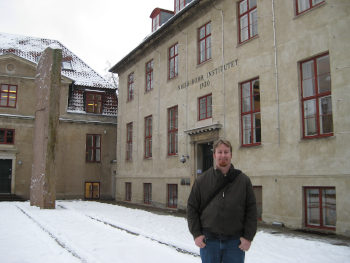Home

I'm Greg Walth, a scientist at IPAC working on the Nancy Grace Roman Space Telescope. In particular, I am member of the Grism-Prism Data Processing System (GDPS) team at IPAC for the Nancy Grace Roman Space Telescope. I am leading the development of the Calibration Data Pipeline (CDP) for Roman.
I study the formation and evolution of dusty, star-forming galaxies (DSFGs). In particular, I utilize gravitational lensing (from foreground clusters and galaxies) to investigate the interstellar medium at high spatial resolution (10-100 pcs) within DSFGs. I've been conducting optical and near-IR spectroscopic follow-up of Herschel selected DSFGs in order to characterize their nebular emission, which can be used determine the instantaneous star formation, chemical enrichment, stellar population, dust attenuation and whether they contain an AGN. The Herschel sample I'm working with comes from the Herschel Lensing Survey (HLS) which surveyed nearly 600 massive galaxy clusters.
I'm also interested in studying the circumgalactic medium around galaxies. I'm leading a Magellan survey of galaxies imaged with Hubble Space Telescope (HST) snapshot program (PI: Sean Johnson) of quasar host environments. The goal of the project is to empirically determine if galaxies within the virial radius of a quasar are dynamically disturbing the cool circumgalactic gas such that it is feeding the quasar's black hole. I'm also a member of The Cosmic Ultraviolet Baryon Survey (CUBS), in which I am leading the parallel slitless HST/WFC3-IR grism survey.
Additionally, I'm interested in data reduction pipelines, and helped develop the IRIS pipeline for the Thirty Meter Telescope (TMT). IRIS is a near-IR IFU which will work at the diffraction limit of TMT.